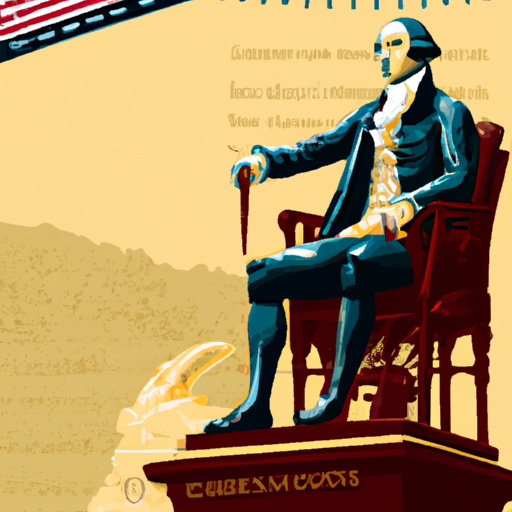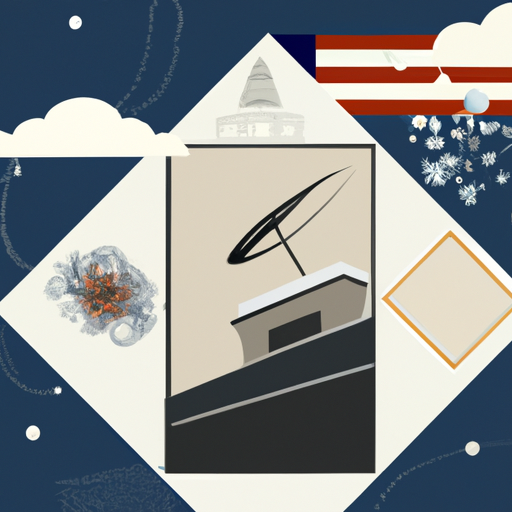Exploring the History of Viking Leaders
History is full of captivating stories that have been hidden for centuries – explore how these legendary individuals shaped our world. Uncover the mysterious tale behind a legendary people and explore how they rose to power and glory!
Introduction
Mystifying and awe-inspiring, the Vikings were a formidable force of seafaring warriors who ruled northern Europe in the Middle Ages. Their raids and trading activities left an indelible mark on many cultures, with their leader, a Jarl or Earl, wielding immense power and authority. Some of these powerful figures even led Viking armies into battle! The most renowned example is Ragnar Lodbrok, an 8th century warrior-king whose conquests are said to have spanned England and France. Unfortunately, his reign was cut short when he was captured by King Aella of Northumbria and met with a grisly end. Fortunately, his sons later avenged his death, leading to further Viking dominance in Europe.
– History of Viking Leadership: Who Was the Chief?
Mysterious and awe-inspiring, the legacy of Viking leadership has endured throughout time. In the 8th to 11th centuries, the seafaring people of Scandinavia were led by chiefs who wielded absolute power over their people. Chosen for strength, wisdom, and courage, these leaders were typically passed down through a single family line; however, some were elected by popular vote among the tribe’s members.
The chief had a dual role: he was both a political and spiritual leader. He would settle disputes between his people, protect them from outside threats, maintain order within the tribe, lead religious ceremonies and consult with seers when making important decisions about war or alliances with other nations. Additionally, he had control over economic matters such as taxation and trade agreements with other countries.
Though they held ultimate control until death or retirement from office, chiefs often delegated authority to trusted advisors or warriors who could help them make decisions or carry out orders efficiently. Much of their influence has been lost to history; however, stories and legends still tell of these great leaders of olden times.
– Exploring the Historical Impact of Viking Leaders
The might and influence of Viking leaders is a captivating part of our collective history. From the 8th to 11th centuries, these warriors and their leaders left an indelible mark on the development of Europe’s cultures, economies, and political systems. Their bravery and ferocity in battle was legendary, but they also had considerable power in their communities – controlling trade routes, imposing taxes, and even declaring war.
In just a few decades during the 9th century, Vikings conquered large portions of land from Britain to Russia – an era known as the “Viking Age”. The Scandinavian warriors were also successful traders; they established trading posts throughout northern Europe that allowed them to exchange goods with distant lands such as Byzantium (modern-day Istanbul) and North Africa.
Many Viking leaders converted to Christianity after being exposed to its teachings through contact with other Europeans or by reading religious texts brought back from abroad. This conversion spread Christianity throughout Scandinavia and beyond; it also had a profound effect on art and culture as Christian motifs began appearing alongside traditional Norse symbols like dragons or wolves.
The legacy of Viking leaders lives on today in various aspects of European culture including language, architecture, literature, music, and more. By exploring the historical impact of these powerful figures we can gain valuable insights into how they shaped our past – for better or worse.
– Examining the Political Strategies Used by Viking Leaders
An era of bold seafaring warriors, the Viking period is renowned for its conquests. Yet the political strategies used by these leaders to gain success remain largely unknown. This article will explore how such tactics impacted history during this time.
Viking rulers employed a variety of approaches to increase their power and extend their reach. Alliances with other groups, both inside and out of their society, allowed them to acquire resources, technology, and knowledge that would have otherwise been unattainable. Additionally, marriage was used as a way to create strong political bonds.
Raids and warfare were also key strategies utilized by Viking leaders. Raids provided them with wealth from other societies while displaying their warrior capabilities at the same time. Warfare was employed to demonstrate dominance over rival groups or territories; through combat they could prove their strength and authority, thus cementing their place in history.
Religion was also relied upon by Viking rulers as a means for gaining influence over people’s lives. Religious rituals and ceremonies demonstrated their power to the masses, while symbols of loyalty among followers created unity within the society.
To summarize, the political strategies implemented by Viking leaders left an indelible mark on our collective past as they helped shape the course of history during this era through alliances, raids, warfare, and religion – all of which enabled them to consolidate power and extend their reach across Europe and beyond.
– Investigating the Role of Religion in Viking Leadership
The mysterious, enigmatic power of religion was a pervasive force in Viking leadership, and its influence can be seen throughout the annals of Scandinavian history. From the ancient Norse gods to Christianity, spiritual beliefs shaped the way Viking leaders interacted with their people and governed their domain. By delving into archaeological evidence, historical records, and other sources, we can gain insight into how religion impacted Viking leadership.
The Norse gods were an integral part of Viking life and were often invoked by rulers in times of war or tribulation. Odin was the most venerated deity in Norse mythology and was worshipped as a god of wisdom, war, and death. He was also believed to be responsible for bestowing kingship upon those who displayed courage and strength on the battlefield. Consequently, many Viking leaders sought his favor in order to establish themselves as legitimate kings or chieftains.
Christianity had a considerable effect on Viking leadership during the 8th century when much of Scandinavia converted to the faith. Christian sovereigns began to implement novel laws that were based on biblical teachings rather than traditional Norse customs. They also sought to propagate Christianity across their lands by using missionaries, churches, monasteries, and schools as instruments for conversion. This led to modifications in how Vikings perceived authority figures; instead of relying solely on strength or power they began to view religious leaders as sources of moral guidance too.
In conclusion, it is evident that religion played a major role in forming Viking leadership throughout history. By examining archaeological evidence and historical texts we can gain understanding into how faith influenced decision-making among Viking rulers and their societies at large.
– Analyzing How Viking Leaders Maintained Power Through History
For centuries, Vikings have been a fixture of history, leaving their indelible mark on the world. To understand how these leaders managed to remain in power, one must look at the various approaches they employed. Alliances and patronage networks were key to bolstering their influence and obtaining resources. Additionally, they had to be able to act quickly in times of trouble, striking swiftly and decisively when necessary. This ensured that no other group could gain an advantage over them. Furthermore, religious beliefs and superstitions were used to gain legitimacy from the people; consulting with priests or shamans was often done before making major decisions about war or trade. Through these tactics, Viking leaders were able to become a formidable force in Europe for centuries.
Conclusion
A mysterious and ambitious figurehead, the “jarl” was a revered leader of the Vikings during their tumultuous period of exploration and expansion from the 8th to 11th centuries. These influential figures were typically affluent and powerful individuals within their society, often related to one another via blood or marriage. Jarls would take charge of raids and conquests, construct intricate trading networks, and settle disputes between rival clans. As the Viking Age developed, certain jarls even attained more power than kings in some areas–ultimately leading to the formation of kingdoms and eventual unification of Scandinavia.
Some questions with answers
Q1. Who was the leader of Vikings?
A1. The leader of the Vikings was called a Jarl or Earl.
Q2. When did the Viking Age take place?
A2. The Viking Age took place from 793 to 1066 AD.
Q3. What did Viking leaders do?
A3. Viking leaders were responsible for leading their people in battle, making decisions regarding trade and alliances, and maintaining law and order within their communities.
Q4. Where did the Vikings originate from?
A4. The Vikings originated from Scandinavia, which includes modern-day Norway, Sweden, and Denmark.
Q5. What is the significance of Viking history?
A5. Viking history is important because it has had a lasting impact on European culture and civilization as we know it today, influencing language, art, architecture, religion, and much more.






